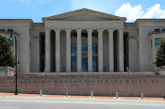Evan Vuccia/AP via NPR
By Ellie Yun
LOS ANGELES — As of Sept. 29, 2022, a reversal in who qualifies for President Joe Biden’s student debt relief plan will precipitate the exclusion of as many as 800,000 federal student loan borrowers from receiving the debt relief they were initially entitled to.
Many student loan borrowers will be impacted by both the exclusion of some loan holders and the student loan forgiveness plan in general. Biden’s plan is expected to provide aid to over 40 million qualifying Americans, with up to 20 million borrowers likely having their remaining balances fully forgiven. While the plan will extend support to many Californians, it still has gaps and draws attention to flaws in the financial aid system.
The student debt relief plan was designed to give middle and working-class families some leeway through the end of the year as they “prepare to resume federal student loan payments in January 2023,” stated President Biden in a tweet.
The federal plan promises some relief for the four million Californians who have some amount of student loan debt. According to new figures from the White House, the states of California, Florida, New York, and Texas will see the largest amount of borrowers eligible for loan relief. California is expected to have over 3.5 million eligible borrowers to receive up to $10,000 in student debt forgiveness and over 2.3 million eligible Pell Grant borrowers.
To qualify for the $10,000 forgiveness, borrowers must earn less than $125,000 per year individually or less than $250,000 a year for couples. To qualify for the $20,000 forgiveness, borrowers must meet the former income requirements and receive a Pell Grant in college. Democrats made multiple extensions to the student loan moratorium and attempted to increase the forgiveness plan to $50,000.
Fifty-five percent of the general public expresses support for forgiving up to $10,000 of an individual’s federal student loan debt, according to an NPR/Ipsos poll. However, support from the general public narrows as the relief becomes more generous. Only 41% support providing full loan forgiveness and coverage to all borrowers.
Yet the U.S. Department of Education has quietly scaled back which federal loans are eligible for forgiveness. The guidelines to the relief plan have since changed to remove borrowers that took out Perkins and Federal Family Education Loans not held by ED.
Many more student loan borrowers could end up receiving less relief than they were promised under the previous guidance. These borrowers cannot receive one-time debt relief unless they applied to consolidate their loans into Direct Loans prior to Sept. 29.
Legal experts believe that the policy reversal was to safeguard against lawsuits halting debt relief from the private banks that manage old FFEL loans. Private banks experience financial harm, lose business, and are deprived of the ongoing interest payments loans generated when Federal Family Education Loan borrowers “consolidate their old loans into federal Direct Loans”, explains NPR.
Furthermore, the plan has faced mixed impressions and still has gaps. So far, only federal loans qualify for forgiveness. Families and students in California often enter debt due to costs outside of tuition such as books, food, and housing. College access has become increasingly more difficult due to education and living costs, especially as students may lose aid if they take over four years to graduate or do not have parents that cover the costs of their education.
Although internal complications exist within the Biden administration’s loan forgiveness program, the plan sheds light on the underlying problem that America’s cost of higher education has reached unreasonable levels. Advocates hope that the plan will lead to more active conversations about increasing college access while managing the rising cost of college as well as reforming current financial aid systems.
The student debt relief plan serves as a valuable attempt at targeted relief to help lower-income students pay for higher education. Looking to the future, the nation must reset the system of education as one that creates opportunities that translate into brighter economic futures for students rather than serving as a debt accumulator.




